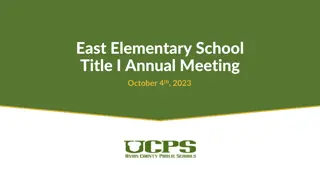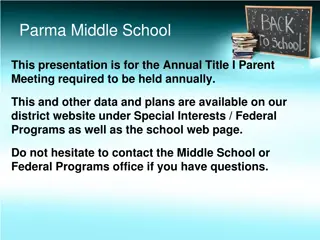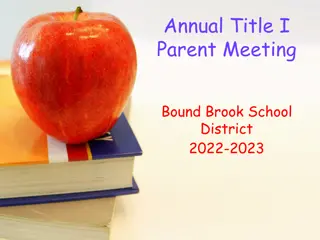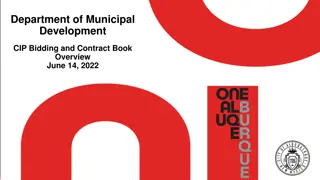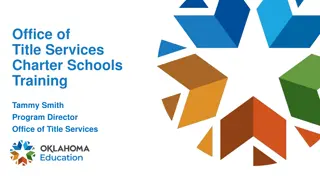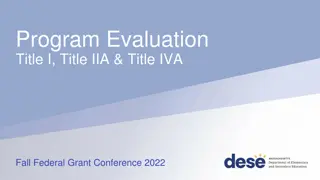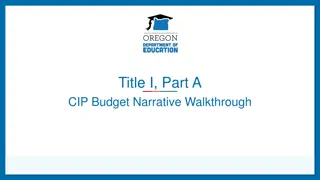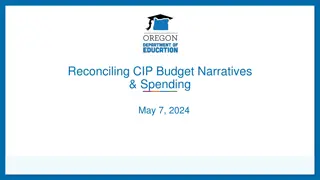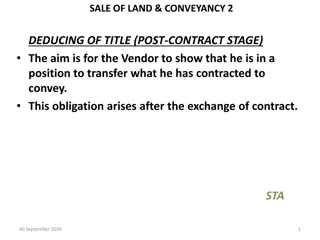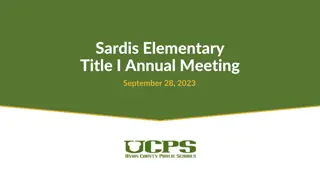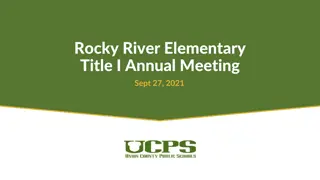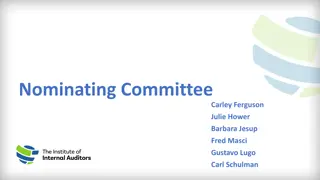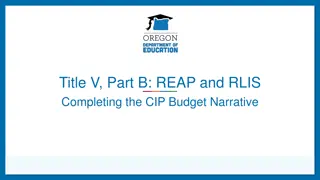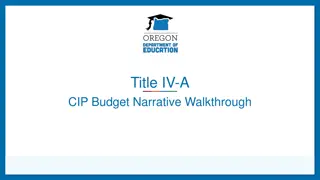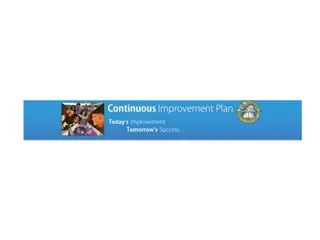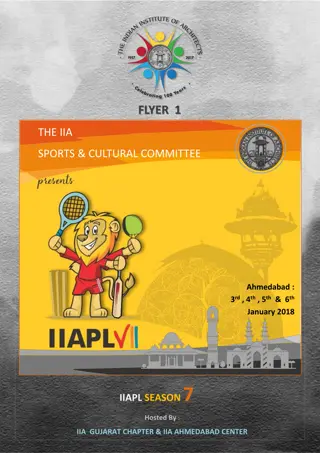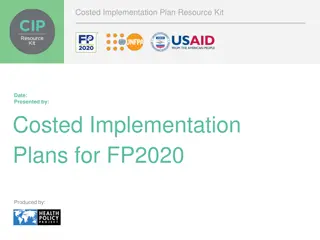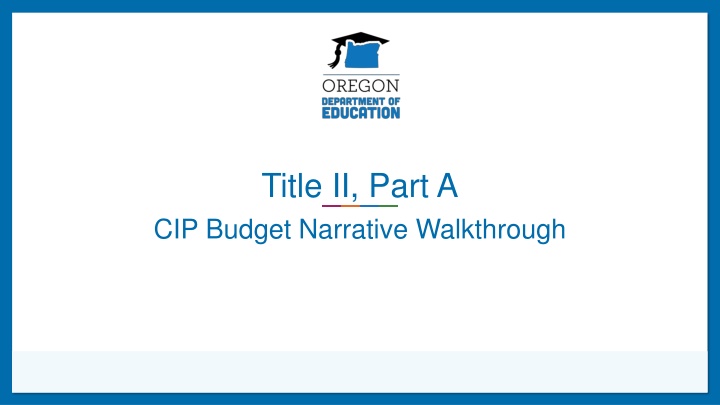
Title II-A CIP Budget Requirements and Application Process
Explore the requirements and guidelines for Title II-A CIP budget narratives, including allowable fund uses and the importance of not supplanting federal funds with state or local funds. Learn about the purpose of Title II-A, outcomes, and accessing the budget narrative for the application process.
Download Presentation

Please find below an Image/Link to download the presentation.
The content on the website is provided AS IS for your information and personal use only. It may not be sold, licensed, or shared on other websites without obtaining consent from the author. If you encounter any issues during the download, it is possible that the publisher has removed the file from their server.
You are allowed to download the files provided on this website for personal or commercial use, subject to the condition that they are used lawfully. All files are the property of their respective owners.
The content on the website is provided AS IS for your information and personal use only. It may not be sold, licensed, or shared on other websites without obtaining consent from the author.
E N D
Presentation Transcript
Title II, Part A CIP Budget Narrative Walkthrough
Outcomes for Today Walkthrough application requirements Understand allowable uses of funds Share resources Oregon Department of Education 2
The purpose of Title II-A is to improve teacher and leader quality and focuses on preparing, training, and recruiting high- quality teachers and principals. Purpose of Title II-A Participants can include: Teachers Principals/Assistant Principals Paraprofessionals Other School Leaders Oregon Department of Education 3
Supplement Not Supplant Federal funds cannot be used to supplant, or take the place of, state and local funds that would have been spent if Title II-A funds were not available Test I: Are the services that the district wants to fund with ESEA funds required under state, local, or another federal law? If they are, there could be the presumption of supplanting. Test II: Were state or local funds used in the last year to pay for these services? If they were, there could be a presumption of supplanting. ESSA Quick Reference Brief: Supplement Not Supplant Oregon Department of Education 4
JULY 2024 AUG 2024 NOV 2024 2024-25 FEDERAL FUNDS TIMELINE 2024-25 BUDGET NARRATIVES DUE 2024-25 BUDGET NARRATIVE APPLICATION OPENS BEGINNING OF 2024-25 GRANT PERIOD NOV 2025 SEPT 2025 FINAL DATE FOR ALL 2024-25 CLAIMS FOR *INITIAL GRANT PERIOD FINAL DATE FOR OBLIGATION OF 2024-25 FUNDS FOR *INTIAL GRANT PERIOD NOV 2025 UNCLAIMED FUNDS BECOME CARRYOVER NOV 2025 NOV 2026 SEPT 2026 *INITIAL GRANT PERIOD: 7/1/24 9/30/25 (15 MONTHS) CARRYOVER APPLICATIONS FOR 2024-25 FUNDS OPEN FINAL DATE FOR OBLIGATION OF 2024- 25 FUNDS FINAL DATE FOR ALL 2024-25 GRANT CLAIMS Oregon Department of Education 5
Application Requirements Title II-A CIP Budget Narrative Oregon Department of Education 6
Accessing the CIP Budget Narrative Login to the District Secure website Choose CIP Budget Narrative from the Applications list If you do not have access to the CIP Budget Narratives, reach out to your district Security Administrator Oregon Department of Education 7
Title II-A CIP Budget Narrative Components Needs Assessment What does the data tell us? Budget Narrative What will we do to meet our needs? Equitable Services Worksheet Only for districts with participating schools Oregon Department of Education 8
Districts must meaningfully consult with a wide array of partners when determining the use of Title II-A funds Administrators Teachers Paraprofessionals Instructional support personnel Families Community members and partners Tribes and tribal organizations Consultation & Engagement Consultation as part of IG work counts! Watch for allowability and supplement not supplant Oregon Department of Education 9
Step 1: Needs Assessment Summary 1. Data Sources List data sources analyzed to determine need 2. Data Analysis Summarize trends or gaps in performance 3. Prioritized Needs Identify support educators need 4. Plan Development Describe process for developing plan Oregon Department of Education 10
Student data e.g.; Achievement, growth, graduation, discipline Possible Data Sources* Perception data e.g.; Surveys, interviews, focus groups, TELL survey, SEED survey System health data e.g.; Retention data, evaluation data, MTSS and data analysis structure *Not an exhaustive list Oregon Department of Education 11
Reminder about Charter Schools District-sponsored charters are district schools Charter school data must be considered as part of needs assessment Consider ways to meet their unique needs Creating a line item for each charter District line item specifically calling out charter school participation Oregon Department of Education 12
Step 2: Completing the Budget Narrative WHAT is the intended objective? List the prioritized need the activity addresses Briefly describe the activity including the knowledge and skills staff will receive Indicate how the strategy meets the USED definition of professional learning WHO will participate? List the type and number of staff participating (e.g., 10 teachers, 1 principal) HOW will you measure impact? Identify what measures will be used to determine whether the strategy is generating the results you expect Oregon Department of Education 13
Defining Professional Learning ESSA defines professional learning as: high quality, sustained, intensive, and classroom-focused in order to have a positive and lasting impact on classroom instruction and the teacher s performance in the classroom and not 1-day or short-term workshops or conferences. [ESEA Section 8101(42)] Conferences and workshops are approvable when they are included as part of larger strategy, not as an end in themselves Oregon Department of Education 14
Step 3: Equitable Services Worksheet Worksheet will only show if there are schools participating in II-A The amount a district must reserve for equitable services is based on the total Title II-A allocation less administrative costs Administrative costs cannot exceed the district s negotiated indirect rate All students in the private school are included in enrollment Oregon Department of Education 15
Private School Equitable Share Create aline item in the narrative for each participating school Date of initial consultation Total equitable services amount from worksheet Most activities allowable for the district are allowable for the private school Must be secular, neutral, non-ideological No salaries, benefits, or substitute costs District must approve school plan for use of funds Oregon Department of Education 16
Allowable Uses Oregon Department of Education 17
Evaluation and support systems Collaborative learning (PLCs) Teacher leadership (coaching, mentoring) Recruitment and retention strategies Endorsements in areas of district need Technology integration Class size reduction Using data to inform instruction Differentiating instruction for focal student groups Early learning Needs and evidenced based professional learning PL focused on abuse, trauma, or mental health supports STEM and CTE Allowable Costs under Title II-A* * Not an exclusive list Oregon Department of Education 18
Personnel Costs Proportional salaries and benefits for staff who: provide professional learning (e.g.; instructional coaches, mentors) administer the Title II-A program Stipends for staff who: Participate in, facilitate, or plan Title II-A funded professional learning Signing and/or retention bonuses to hire and retain a diverse workforce and/or effective teachers in high need schools Substitute costs for staff who participate in Title II-A funded PL Oregon Department of Education 19
Common Uses Job-embedded Professional Learning Data teams/PLCs Instructional coaching Learning Walks Supporting Student Needs Universal Design for Learning (UDL) Culturally responsive teaching Trauma-informed practices SEL and mental health Recruitment and Retention Endorsements in areas of need (e.g. SPED, ESOL) Induction and mentoring Grow Your Own programs REMEMBER: Funds are used to support educators and cannot provide direct services to students. Oregon Department of Education 20
Meeting ESSAs Professional Learning Definition ESSA defines professional learning as: high quality, sustained, intensive, and classroom-focused in order to have a positive and lasting impact on classroom instruction and the teacher s performance in the classroom and not 1-day or short-term workshops or conferences. [ESEA Section 8101(42)] Conferences and workshops are approvable when they are included as part of larger strategy, not as an end in themselves Oregon Department of Education 21
Who are other school leaders? According to ESEA 8101(A)(44): The term school leader means a principal, assistant principal, or other individual who is: (A) an employee or officer of an elementary school or secondary school, local education agency, or other entity operating an elementary school or secondary school; and (B) responsible for the daily instructional leadership and managerial operations in the elementary school or secondary school building. Oregon Department of Education 22
Resources Title II-A web page Title II-A Listserv Federal Non-Regulatory Guidance Oregon Federal Funds Guide Title II-A User Guide CIP Budget Narrative User Guide CIP Budget Narrative Checklists Oregon Department of Education 23
Please reach out! Amy Tidwell amy.tidwell@ode.oregon.gov Jen Engberg jennifer.engberg@ode.oregon.gov Lisa Plumb lisa.plumb@ode.oregon.gov Sarah Martin sarah.martin@ode.oregon.gov Oregon Department of Education 24
Regional Contacts by ESD Amy Tidwell o Grant, Harney, High Desert, InterMountain, Jefferson, North Central and Region 18 Jen Engberg Clackamas, Columbia Gorge, Multnomah and Northwest Regional Lisa Plumb Lane, Linn Benton Lincoln and Willamette Sarah Martin Douglas, Lake, Malheur, South Coast and Southern Oregon Oregon Department of Education 25

